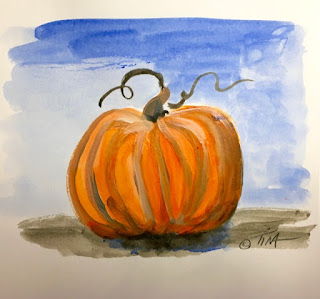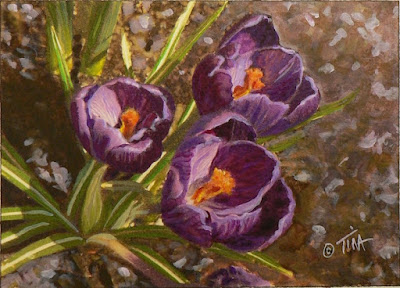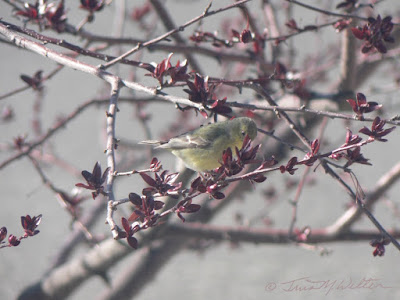I chose Ultramarine blue and Cadmium orange and found that they were very versatile when mixed together. The addition of Titanium white resulted in a wide palette of useful colors.
A couple of ideas immediately came to mind to sketch out using these colors. Pumpkins, of course.
The blue tones also made me think of a wintery sunset on the Oregon coast. I searched through my photo reference and found the perfect image from when we stayed at a condo at Otter rock, December 2016.
Using a very light pencil lines, I made a basic grid in thirds on my 5x7 watercolor paper and made a few light sketch lines of the clouds. When painting with acrylics, it's good to remember that heavy pencil lines can become "trapped" under the paint where they are not easily erased.
Working light to dark, I used lighter tones to sketch in the basic shapes and colors and also set the horizon line at the bottom third of the painting.
Next, I used darker tones to add drama and contrast.
Last, I added more details using the lightest tones to shape the clouds and waves. I also strengthened the pure blue and orange colors at the horizon. That was fun!
I think the simplest thing to remember from this experiment of mixing primary colors and their secondary color is that you will always get the most interesting shades of grey. That might not sound impressive, but when painting it's often what is going on in the shadows that really make the highlights shine and gives a sense of warmth and depth to a subject. I really don't need black very often, if at all. Put that tube of Mars Black down and try mixing those wonderful dark colors yourself.
Happy Creating!
>^-^<
Tina





































